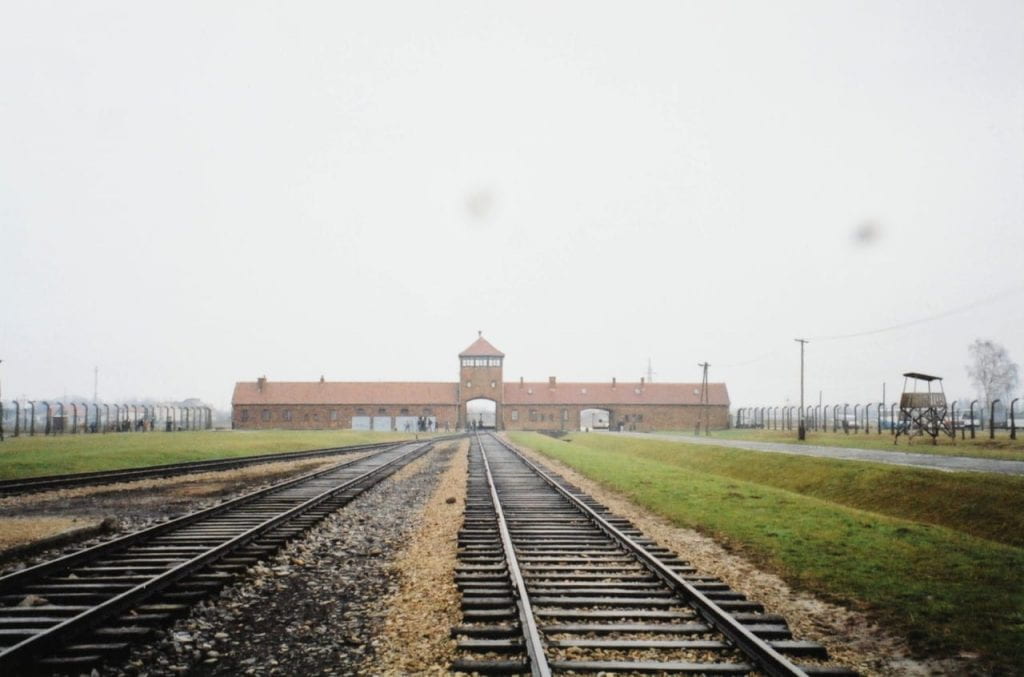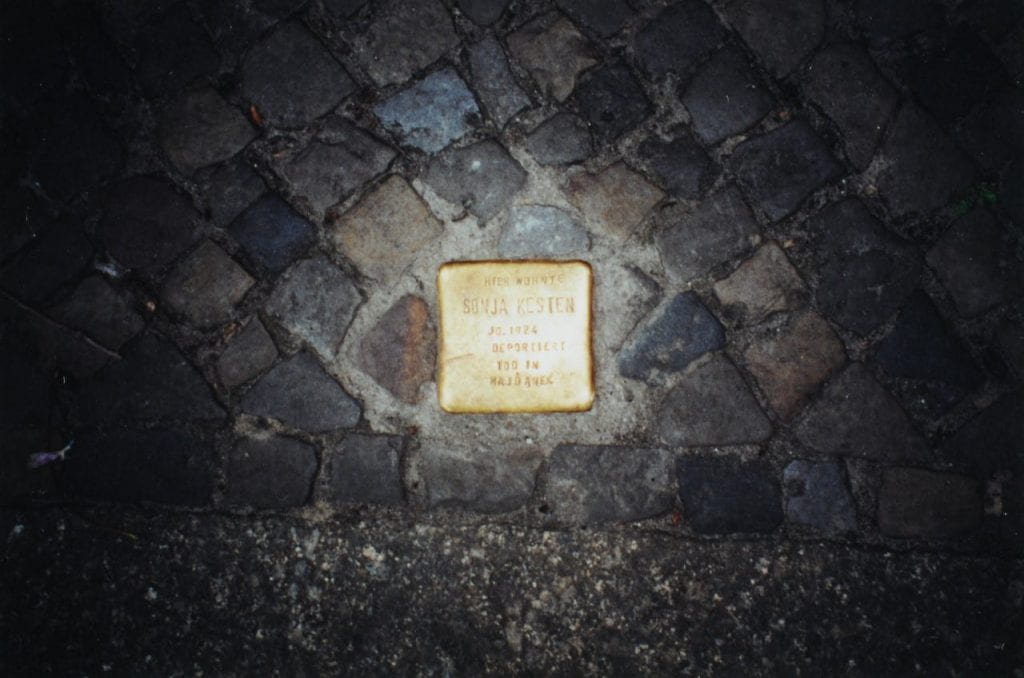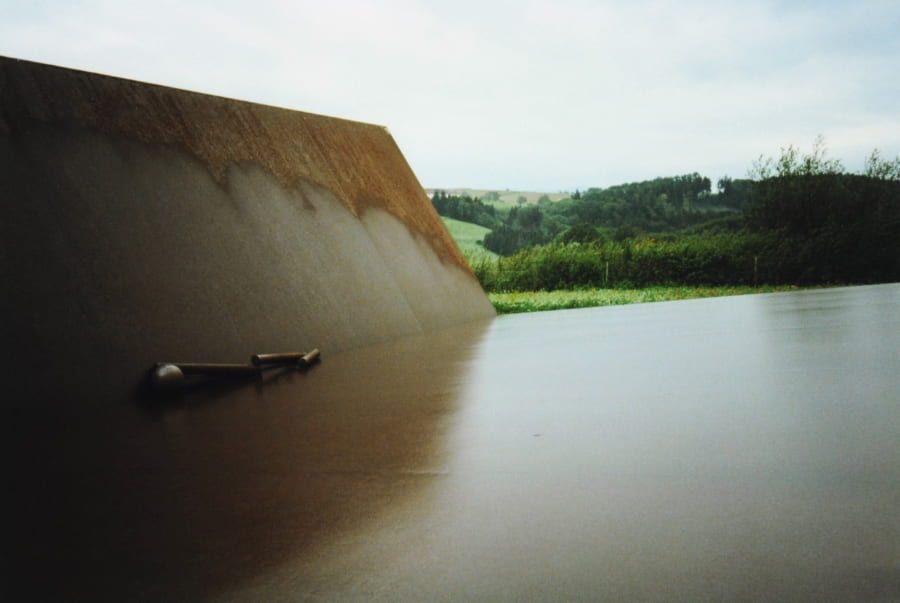By Jonathon Catlin
This post originally appeared as the entry for “catastrophe” on the conceptual history blog Komposita, which was initiated at the University of Bielefeld in honor of Reinhart Koselleck’s centennial.
***
Reinhart Koselleck’s onetime denazification instructor Eric Hobsbawm termed the years 1914–1950 the “age of catastrophe.” In a 1997 essay, Koselleck reflects on the difficulty of making sense of this era from its documentary traces, taking as an example a few thousand undelivered letters written by German soldiers dying at Stalingrad that “sought in vain to find meaning in the catastrophe” (178). While Joseph Goebbels intended to present them as heroic propaganda, in Koselleck’s view this project was doomed from the start, for the letters’ “abundance of interpretations” range from “absolute desperation to sarcastic commentaries and ironic observations” and are dominated by a sense of “abandonment and helplessness.” “Today,” he writes, “we are inclined to interpret these events in terms of meaninglessness or even as total absurdity.” Eyewitnesses also failed to invest these events with meaning: “the reality of the battle would not allow for it.” According to what Jan Eike Dunkhase has termed Koselleck’s “historical existentialism,” “attributions of meaning” (Sinnstiftungen) imposed on such inherently absurd histories for ideological purposes are often resisted by the facts (Ibid., 182). Stalingrad and Auschwitz, Koselleck says, “coalesce” in that “they had their common ground in an ideology of salvation, eagerness to make sacrifices and find victims, and the racist ideology of obliteration” (Ibid., 181.) Yet outside redemptive Nazi ideology, both events are “meaningless, or rather, absurd.”
In a late interview, Koselleck reflected on the limitations of historical reflection on the catastrophes to which his generation bore witness, especially on “the catastrophe” of the Shoah. Unlike between French and Germans, he said, there is no “common ground” between Germans and Jews that “allows you to deal with the past in equal terms,” because “the annihilation was so overwhelming” (114). Nevertheless, in his later years Koselleck became an active voice in German memory culture and proposed a number of mnemonic guidelines. Through his contributions to debates about the creation of a federal German Holocaust memorial in Berlin, Koselleck said he had “tried—but failed” to advocate for also commemorating other victim groups including Slavs, Russians, and Poles. However, claims about “the singularity of the extermination of the Jews” led to intractable disagreements; on such “a delicate subject,” he said, the “prejudice” of those still living “will inevitably contaminate memories.” As German Holocaust memory debates (Part 1 and Part 2) continue to demonstrate, what Koselleck called history’s inherent “multiplicity of meanings” (Vielsinnigkeit) (“Absurdity,” 194.) can leave individual memories tangled in knots and working-through blocked by identitarian resistance.
Koselleck dismissed Halbwachs’s notion of “collective memory,” instead employing the metaphor of historical experience as “congealed lava” filling up the individual and hardening: “I cannot transfer my experiences […] I can only communicate them.” He developed this insight into a maxim: “One has the right to their own memory—I will not allow it to be collectivized.” Notably, the “day of liberation” in 1945 proclaimed by Federal President Richard von Weizsäcker in 1985 was for Koselleck “the beginning of slavery” as a Soviet prisoner of war held at Auschwitz and various Gulag camps. Koselleck wrote as one of the vanquished, yet he said the “deliverance” Weizsäcker implied was misleading, “as if we had all been victims,” when in fact, “we Germans were also perpetrators in a very clear sense…to say I am a victim would be a lie to me.”
As Lisa Regazzoni has suggested, it is not entirely surprising that Koselleck turned his interest from concepts to monuments and memorials: the two are analogous in that both are indexes of structural transformations in historical meaning across generations, but are also sources of ideological power, as survivors impose meaning on the deaths of their forebears. Koselleck was an outspoken critic of Käthe Kollwitz’s Pietà being dedicated as Berlin’s Neue Wachememorial in 1993. The passive voice of its inscription, “to the victims of war and dictatorship,” suggested that Germans were only victims, while the statue itself imposed a redemptive Christian meaning on the Jewish Shoah. He also objected to the “hierarchy of victims” established by the proposed memorial dedicated exclusively to Europe’s murdered Jews; the lack of a singular memorial would necessitate further memorials to other groups, but the more than three million Soviet prisoners of war murdered by the Nazis have still not been memorialized. “Mourning is not divisible,” he argued in a 1998 article in Die Zeit, especially not along the pseudoscientific categories employed by the SS. Further, in Germany alone, he said, “we are politically responsible, and for that reason we must also remember and memorialize the actions and the perpetrators and not solely the victims.”
Abstract monuments represent the “aporia” of what Koselleck called “negative memory,” which came after redemptive modern memory regimes of heroic national sacrifice. “After the Second World War,” he said, “it became apparent that catastrophe can never be remembered enough and never conclusively,” thus compelling a turn to “negative monuments and process monuments.” He saw these as “attempts to show that the question of meaning has itself become meaningless” and as recognizing “the impossibility of generating meaning through memorialization itself” (“Negative Memory,” 248). Faced with catastrophic histories, “monuments of the absurd” offer “a small margin of escape” through art (20).
In Koselleck’s Bildnachlass in Marburg lie thousands of photographs he took in his journeys through the rubble of Europe’s catastrophic century. They sketch a history of aesthetic strategies for memorializing mass death: from triumphal national monuments to nineteenth-century wars, to smaller obelisks featuring the names of the local dead from World War I, to an early figurative memorial at Auschwitz, to the 17,000 stones erected at Treblinka with the place names of the murdered, to the modernist Treblinka monument in Berlin-Charlottenburg, to the Federal Republic’s monument at the concentration camp Mauthausen.

The Mauthausen memorial, an exemplar of negative memory, was designed by the German sculptor Fritz Koenig, who like Koselleck fought on the Eastern Front and was held as a prisoner of war. Dated to 1982/83, it prefigures Peter Eisenman’s 2004 Berlin Holocaust Memorial Berlin in its minimalism, consisting of a large, rusted, V-shaped metal plane with stereometric forms resembling a skeletal human figure lying collapsed in the crevice. Situated overlooking quarries in which starved prisoners were worked to death, it symbolizes the absurdity of this useless labor. Yet this regime of abstract memorialization does not have the last word: In the Bildnachlass one also finds a photo Koselleck took in 2001 of a singular Stolperstein, or stumbling stone, which the artist Gunter Demnig began installing around Germany in 1992. One imagines Koselleck on a visit to Berlin, walking through Kreuzberg at night, and being struck by the glint of the brass plate marking the former residence of a single murdered victim: Sonja Kesten. He even once suggested that allmemorials are “Stolpersteine.”

Another trace linking Koselleck to histories of catastrophe lies in his library, now held at the Deutsches Literaturarchiv in Marbach. A note in the catalog entry for his copy of W. G. Sebald’s 2001 Austerlitz states, “This volume was the last reading that Koselleck undertook, and it was still on his bedside table when he died on February 3rd, 2006.”[1] Sebald was born in 1944, making him twenty-one years Koselleck’s junior and part of a younger generation that resented the guilt and complicity of their parents. Sebald said shortly before his untimely death, “I don’t think you can focus on the horror of the Holocaust. It’s like the head of the Medusa: you carry it with you in a sack, but if you looked at it you’d be petrified.” He reflected that while he found it “necessary above all to write about the history of persecution,” he was “at the same time conscious that […] to write about concentration camps in my view is practically impossible” (79). Sebald’s solution to this aporia resembles Koselleck’s view of negative memory: “the main scenes of horror are never directly addressed.” Direct images of the camps, he explains, “militate against our capacity for discursive thinking, for reflecting upon these things, and also paralyze, as it were, our moral capacity.” Hence, he concludes, “the only way in which one can approach these things, in my view, is obliquely, tangentially, by reference rather than by direct confrontation” (79-80).
Like Koselleck’s reflections on Stalingrad, Sebald’s 1997 lectures On the Natural History of Destruction stressed the cliché nature of popular reactions to the fire-bombing of German cities, which became an unmourned traumatic blockage In The Rings of Saturn (1995), he provocatively juxtaposed colonial atrocities in the Belgian Congo with a large, decontextualized image of corpses found at Bergen-Belsen concentration camp. His final chapter discusses how the cultivation of silkworms became a popular hobby for children in the Third Reich to teach eugenic selection, and ends with a reflection on his view of “our history” as “nothing but a long account of calamities” (295). He similarly ends his lectures on Destruction by invoking Walter Benjamin’s famous description of how, from the perspective of the Angel of History, history appears not as “a chain of events” but as “one single catastrophe, which keeps piling wreckage upon wreckage and hurls it at his feet.”
My ongoing project is a history of the concept of catastrophe in twentieth-century European thought and centers on Benjamin and Theodor W. Adorno’s conception of history as a “permanent catastrophe”—an idea, as I have argued elsewhere, that has often been prematurely dismissed as irrational and overly pessimistic. Existing histories of the German Katastrophe share the contention that ever more exaggerated and inflationary use of the term has led to its contemporary “diffuseness” and semantic “exhaustion.” As the category of catastrophe expanded and proliferated in the twentieth century, these scholars argue, it transformed from naming an event, to a process, to a permanent state (Dauerzustand). Thereby, they claim, it lost descriptive and analytical power, for, as the disaster researcher Wolf Dombrowsky warned already in 1989, “nothing is catastrophic when everything is called catastrophe” (47). Some have even concluded that the term’s inherent ambiguity may “undermine” the requirement of a “relatively stable semantic core” necessary for Begriffsgeschichte (186).
Koselleck’s reflections on the absurdity of twentieth-century history can help us grasp why these failures to conceptualize catastrophe are essential to its aporetic semantics. Koselleck observed that still in the postwar period the concept of crisis’s “inflationary usage covers almost all aspects of life” (236). Yet instead of conclude from this that the concept had lost its meaning, he suggested that this discursive profusion “may itself be viewed as the symptom of a historical crisis that cannot as yet be fully gauged” (399).
Susan Neiman argues that the revelations of mass death at Hiroshima and Auschwitz in 1945 ended the era of philosophical modernity that began with the Lisbon earthquake of 1755 and inaugurated a “postmodern” era that corresponds to Koselleck’s claim about the meaninglessness of history after the mass death of the First World War and the mechanized genocide of the Second. In Neiman’s words, “Auschwitz was conceptually devastating,” defying existing moral, legal, philosophical, and historical frameworks and demanding a reworking of thought itself (251-2). Catastrophes, then, are not simply events causing death and destruction (like accidents, disasters, or calamities), but events or processes of “overturning” or “a subversion of the order or system of things.” Both in “natural” catastrophes like Lisbon (a “natural evil”) and what Adorno called the “natural catastrophe of society” of Auschwitz (a “moral evil”), the trauma of history overwhelms taken-for-granted powers of experience, language, and thought (105). Thus Jean-François Lyotard compared Auschwitz to an earthquake that destroys not only lives, buildings, and objects but also the instruments used to measure it, so that the devastation itself cannot even be fully gauged (56). As Koselleck said in a 1988 lecture, “there are events for which words fail us, that leave us speechless, and to which we can (perhaps) only respond with silence. We only need to recall the speechlessness of the Germans when they were confronted with their catastrophe, which drew innumerable people and peoples into it. To this day, every attempt to find a language adequate to mass extermination seems to fail” (140-1). Following Neiman and also Koselleck, might we say that catastrophe occurs when concepts themselves fail?
Koselleck wrote that Critique and Crisis “represented an attempt to examine the historical preconditions of German National Socialism, whose loss of reality and Utopian self-exaltation had resulted in hitherto unprecedented crimes” (1). He claimed to have met Hannah Arendt in 1956 in Heidelberg, and he shared with her the view that the catastrophes of the twentieth century were rooted in utopian ideologies that claimed to know and execute the laws of history. His 1955 German edition of The Origins of Totalitarianism is extensively annotated at passages including, “It is therefore more than accidental that the catastrophic defeats of the peoples of Europe began with the catastrophe of the Jewish people.” Koselleck also initially intended to entitle his dissertation Dialektik der Aufklärung until he learned of Adorno and Horkheimer’s 1944/47 foundational work of Critical Theory by that same name (170). He added that work to the bibliography of the book version he published in 1959, and in a 1973 preface he referred explicitly to a dialectic of enlightenment (x). A telling underlining in his personal copy of Dialectic reveals a thesis he shared regarding the origins of twentieth-century violence: “Enlightenment is totalitarian.”[2] The age of catastrophe was also the death rattle of the age of utopias, and Koselleck once described his own intellectual-political disposition thus: “My basic attitude was skepticism as the minimum condition for reducing utopian excess—including the utopian excess of 1968.”
The “century of the catastrophes,” in which Koselleck lived, he once reflected, was also the century of “technical-industrial expansion,” of “mass murder and exile escalated into the millions,” and of acceleration not toward progress but toward Auschwitz (227). This was also the period before which the Geschichtliche Grundbegriffe had to halt because the semantic stability of the Sattelzeit on which it was premised ran aground on what Walter Benjamin called the Trümmer, or wreckage, of history as “catastrophe in permanence” (164).
In his work on twentieth-century concepts that overstep this modern temporal frame, Anson Rabinbach has argued that “instead of an open-ended horizon of expectation,” concepts such as total war, totalitarianism, and genocide, “bring the catastrophic events of the twentieth century into the semantics of historical experience, emphasizing neither futurity nor acceleration but dystopia and deceleration” (104). The modern experience of navigating crisis by hastening the coming of progress through utopian social planning was superseded by the post-modern fear of catastrophe and the aim of slowing history down. As the construction of new utopias gave way to attempts to avert dystopia, catastrophe thus became the Grundbegriff or “structural signature” for the twentieth century that Koselleck argued crisis was for the modern period.
Adorno thus said in 1965 that after Auschwitz and Hiroshima, and in light of the “impending catastrophes” of the Cold War, he could continue to conceive of “progress” only in its most minimal form as “the prevention and avoidance of total catastrophe” (143). At the end of the “age of extremes,” in 1992, Günther Anders similarly articulated a maxim followed by many intellectuals of his generation: “it is imperative to think against catastrophe.” This anti-catastrophism was taken up with the same intensity by Koselleck. Already at the opening of his 1959 Critique and Crisis, Koselleck wrote that the whole world had drifted “into a state of permanent crisis,” while accelerating technology threatened to “blow up mankind as well in a self-initiated process of self-destruction” (5). It was a central fallacy of modern utopian philosophies of history, he wrote already in his dissertation, to believe that this political crisis could be anticipated, steered, or—“as catastrophe”—prevented. (Ibid.) Yet he also later wrote that if it is true that “from the industrial system founded on scientific-technical principles comes the infinitely increasing potential for destruction, by virtue of which mankind may annihilate itself at any moment,” then it follows that “anticipating catastrophe is a duty of politics, of the politics of the future” (229-230).
As we continue to blindly accelerate forward into the era of climate change and confront new forms of “slow catastrophe” and what Eva Horn has called “catastrophe without event,” Koselleck’s reflections on the absurdity of catastrophic history also serve as a history of the present, charting a dark course through the modern era that led us here.
[1] Deutsches Literaturarchiv Marbach. Signatur: BRK2.3. No. 201207689.
[2] See Koselleck’s personal copy of Max Horkheimer and Theodor W. Adorno, Dialektik der Aufklärung: Philosophische Fragmente. Amsterdam: Querido, 1947, 16. Held at the Deutsches Literaturarchiv Marbach. Signature: BRK2.1. No. 201202010
Jonathon Catlin is a co-editor of Komposita, a Fellow in the Berlin Program at Freie Universität Berlin, and a PhD Candidate in History and the Interdisciplinary Doctoral Program in the Humanities at Princeton University, where he is writing a dissertation on the concept of catastrophe in twentieth-century thought. His work has appeared in History and Theory, Memory Studies, and the Los Angles Review of Books, among other venues. In 2018 he reviewed the Bielefeld exhibition “Koselleck und das Bild” for the Journal of the History of Ideas Blog, where he is a contributing editor. He tweets @planetdenken.
Edited by Tom Furse
Featured Image: Reinhart Koselleck (Photograph), Memorial of the Federal Republic of Germany at the site of the former concentration camp Mauthausen, undated. Bildarchiv Foto Marburg, Bildnachlass Reinhart Koselleck, Inventar-Nr. 092-01-0001-001-(001-025).



